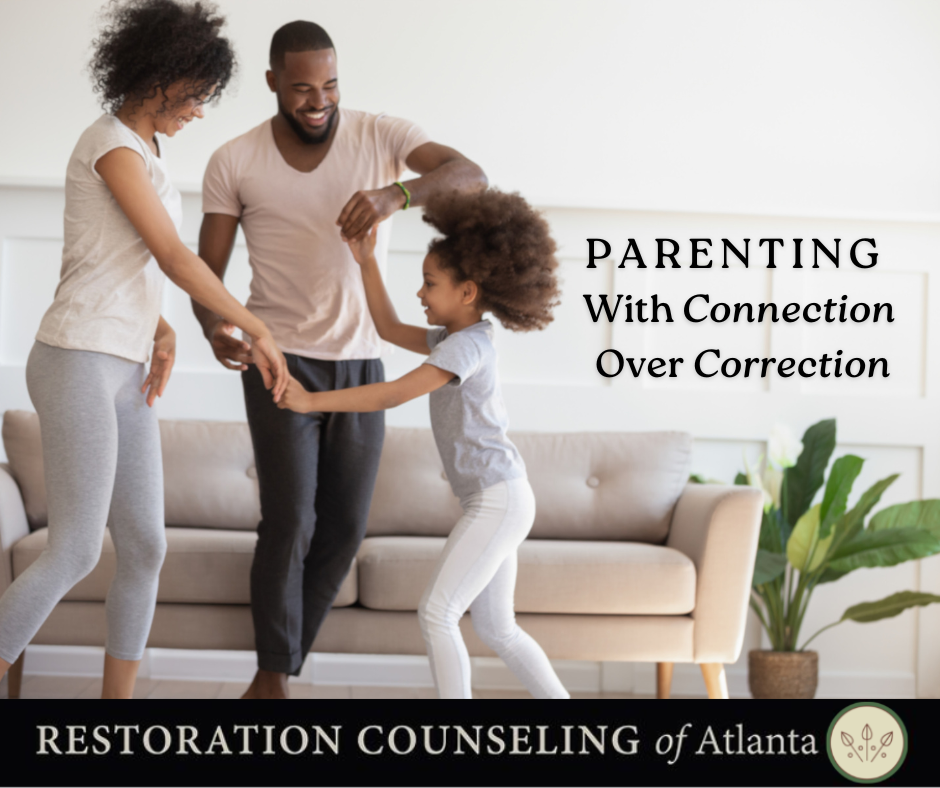Part 1: Responding to Failure
I remember the first Christian parenting class I attended as an exhausted, novice mom. I was challenged and humbled to my core when I realized my threshold for parenting with grace should mirror that of our self-sacrificing Savior. How is it that God’s mercy for those who persecuted Him exceeded the amount of compassion that I had for my overtired toddler?
In this series of articles, I hope to provide tangible strategies that foster connection even in difficult moments. Using Christ’s character as the standard for raising our children, we can foster a secure attachment with open communication. This doesn’t mean that correction goes out of the window. Our God is a God of authority and power, but even in His sovereignty, He longs for a personal relationship with each of us. It isn’t necessarily natural to prioritize connection over correction. It will take time and intentionality to create new relational habits that bring opportunities for emotional coaching and character-building for our kids. When connection and correction are balanced appropriately, freedom and safety can develop simultaneously within our relationships with our children.
Responding to Perceived Failure: The 4-S Strategy
For the sake of application, I will use an example to illustrate thoughtful responses to perceived failures: My daughter fails her social studies test.
My reaction: I’m upset and frustrated. She’s a good student and a smart kid.
Did you study? Did your teacher give you a study guide? How are you utilizing your time? You should not be bringing home grades like this.
I can blame my child or even the teacher for this perceived failure, or I can pause and practice prudence. I developed the 4-S strategy for my family to combat shame and cultivate connection.
Sit
I recommend always attempting to start with Sit and then pick at least one additional S that best fits the child’s situation and needs. I sit with her and get on her level. She is already upset with herself; I do not need to add to that guilt. I provide comfort and safety for her to share more about what happened in this situation. I am not telling her that a failed grade is acceptable, but I am showing her that my love for her is unchanged. Modeling God’s unconditional love to our children cultivates empathy and understanding which helps us respond instead of react. Proverbs 15:1 tells us that “A gentle answer turns away wrath, but a harsh word stirs up anger.”
I’m here to listen and understand. Tell me more.
Spin
To spin the problem is to shift the perspective or provide a reframe. Failure is a natural part of success. When we normalize failure or discomfort, we actually promote healthy emotional regulation in our children. It goes against all parental nature; we want to shield our kids from negative experiences, but pain and suffering are part of the human experience in our fallen world.
I know you are disappointed with your grade, but this gives us the opportunity to learn how to study better moving forward.
Be careful not to jump straight into Spin. We want to avoid Spins that detract from the child’s emotional experience or distract them from dealing with the issue. When we go straight for a silver lining, we can gloss over the child’s emotional experience, inadvertently teaching them to ignore their emotions or intuition. Children validated in their emotional experience will learn to trust their intuition.
Solve
Often, we react and jump straight into problem-solving as parents. This can be helpful but also promote raising a child without self-agency. If your kiddo is a preteen or older, let them problem-solve first. This is developmentally appropriate and offers them an opportunity to manage conflict on their own. That is a gift in training for future relationships and careers in adulthood.
How can you be a problem-solver? Do you need my help? But sometimes, the problem isn’t always Solve-able. Teaching our kids acceptance and accountability is part of this process, too. We can’t solve this problem tonight. Can we pray for peace and rest for our minds and hearts?
Shake
Lastly, we have to shake it up or shake it out. We don’t want to promote fixating on the problem at hand. Let’s demonstrate to our kids that we can regulate, troubleshoot, and keep the day moving forward. This cultivates resilience in our children. We don’t learn how to “bounce back” without dropping down and experiencing a low. Resilience cannot be learned without encountering failure or loss. When we choose to move instead of getting stuck, it’s a symbolic change of momentum. The law of inertia says that an object at rest will stay at rest. A child in hurt will stay in hurt. A child on video games will stay on video games. Sometimes, we all need to disrupt inertia to shake things up and bring about positive momentum.
I hope that you feel better after talking about this. Now, let’s get a change of scenery.
Do you want to get up and take the dog for a walk?
Why don’t we turn on fun music and have a dance party?
Want to play a game?
After these strategies become more natural responses for you and your family, you create a culture of caring. As your children grow older, start with Sit and then ask what they need: Spin, Solve, or Shake? Once our children are self-aware enough to express their needs successfully to us in an emotionally mature way, we set them up for a lifetime of self-agency and better attunement to those around them.

Written by Katharine LeCraw, MA
Roswell & Woodstock
katharine@restorationcounselingatl.com, ext. 120
Katharine LeCraw is a trauma-informed therapist eager to complete deep work with clients that promotes the healing of core wounds and spiritual freedom. With training in IFS, CBT, Child-Centered Play Therapy, Somatic Experiencing, and Person-Centered Therapy, Katharine utilizes a multi-modal therapeutic approach in order to provide the best care for her clients. Katharine works with a diverse population of clientele with a special focus on parenting issues, child and teen therapy, anxiety disorders, burnout, sexual trauma, core wounding, and attachment issues.

